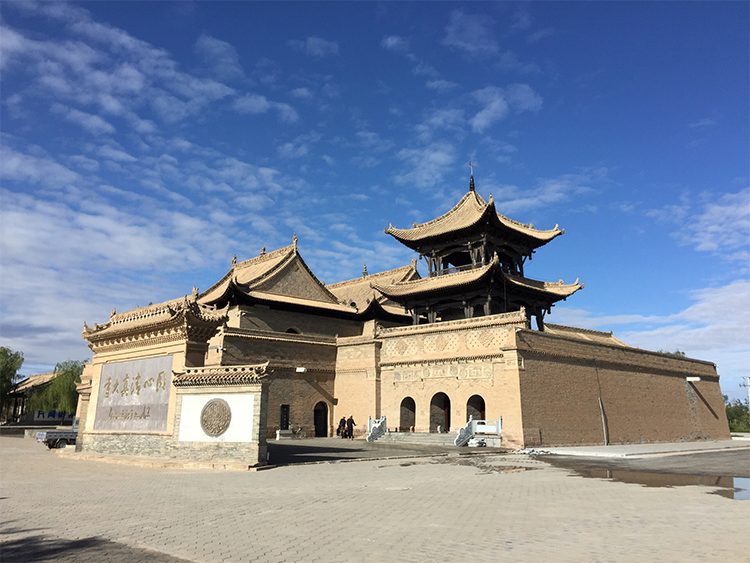Tongxin Grand Mosque: Ningxia’s Gem of Islamic Architecture in China
Nestled in Tongxin County, Wuzhong City, Ningxia, the Tongxin Grand Mosque stands as a striking fusion of Chinese architectural tradition and Islamic culture. Founded during the Wanli years of the Ming dynasty (1573–1620), this mosque is one of Ningxia’s oldest and largest surviving Islamic sites. Its green-tiled eaves, Arabic calligraphy, and symmetrical brick-and-wood layout tell stories of faith, Hui culture, revolutionary history, and classical craftsmanship.
1. History: From Sacred Site to Revolutionary Witness
Tongxin Grand Mosque has more than 400 years of continuous history through the Ming, Qing, and Republican eras to the present day. In 1936 the mosque witnessed an important moment when the Hui Autonomous Government of Yuhai County, Shaan-Gan-Ning Province was established here during the Red Army’s westward expedition—an early experiment in regional ethnic autonomy. In recognition of its cultural and historical value, the mosque was listed as a National Key Cultural Relics Protection Unit in 1988.
2. Architectural Art: Aesthetic Symphony of Chinese-Islamic Cultures
(1) Layout and Structure
The mosque follows a traditional Chinese central-axis symmetrical plan. Major components include the prayer hall, the Minaret-style Bunker Tower (used historically to call to prayer), and north and south lecture halls. Built with brick-and-wood construction and adorned with dougong brackets and flying eaves, its form differs from the domed mosques commonly seen elsewhere while meeting Islamic functional requirements.
(2) Decorative Details
– Interior of the Main Hall: The prayer hall can hold roughly a thousand worshippers. Walls are decorated with Arabic calligraphy and geometric patterns—restrained, solemn designs that align with Islamic aniconic principles.
– Green-Tiled Roof: Traditional Chinese glazed tiles in a green palette harmonize with Islamic reverence for green, producing a dignified, balanced appearance.
3. Religious Activities and Immersive Experience
(1) Daily Prayers
As an important religious center in Ningxia, Tongxin Grand Mosque holds five daily prayers, with congregational Friday prayers (Jumu’ah) particularly significant and well-attended. Visitors are welcome to observe quietly or photograph respectfully, but avoid photographing worshippers facing the prayer.
(2) Participation and Etiquette
– Dress Code: Dress modestly. Women are recommended to wear a headscarf (not mandatory but respectful).
– Behavior: Keep noise to a minimum, do not touch the Quran or religious objects, and non-Muslims should not enter the core prayer area during services.

4. Atmosphere and Setting
Tongxin Grand Mosque is not a bustling tourist attraction but a tranquil sacred place for local Hui worship. The call from the tower at dawn and the solemn light at dusk convey the power of faith. It is an ideal place for contemplative photography and cultural observation.
5. Practical Information
– Address: Yuhai Town, Tongxin County, Wuzhong City, Ningxia
– Opening Hours: Open all day (please avoid disrupting prayer times)
– Admission: Free
– Transport:
– Bus: Take a bus from Wuzhong city to Tongxin County, then walk or taxi to the mosque.
– Driving: There is parking available near the temple for private cars.
6. Suggested Visit
– Recommended Stay: 1–2 hours (enough for cultural photography and a calm visit).
– Best Photo Spots: Capture the distant composition of the Bunker Tower and the sweeping eaves of the main hall.
– Combine Nearby: Pair your visit with the Red Army West Expedition Memorial Hall or Ningxia Hui Culture Park to deepen your understanding of local history and customs.

7. Local Tips
– Best Time to Visit: Early morning or late afternoon to avoid the midday heat and enjoy softer light.
– Watch Out: Occasional street vendors offering fortune-telling or overpriced souvenirs can be persistent—exercise caution.
Tongxin Grand Mosque is more than a religious building: it symbolizes the blending of Chinese and Islamic civilizations. Whether you are an architecture enthusiast, a history researcher, or a traveler seeking tranquility, the mosque offers a moving encounter with layered cultural heritage.


